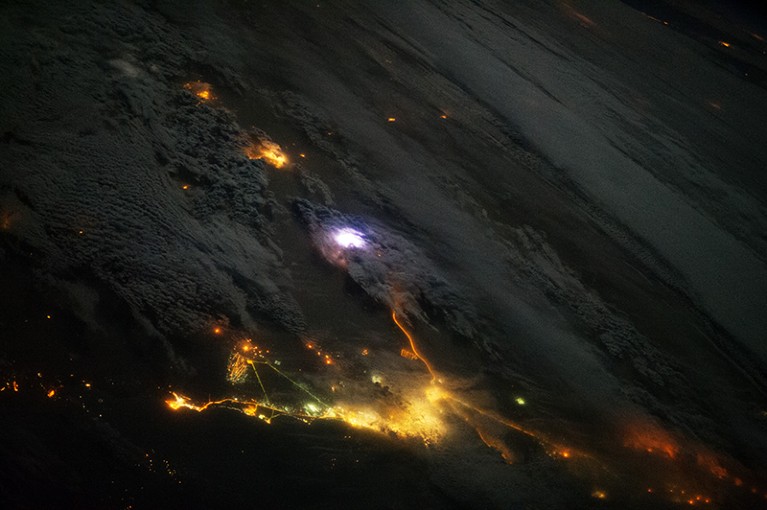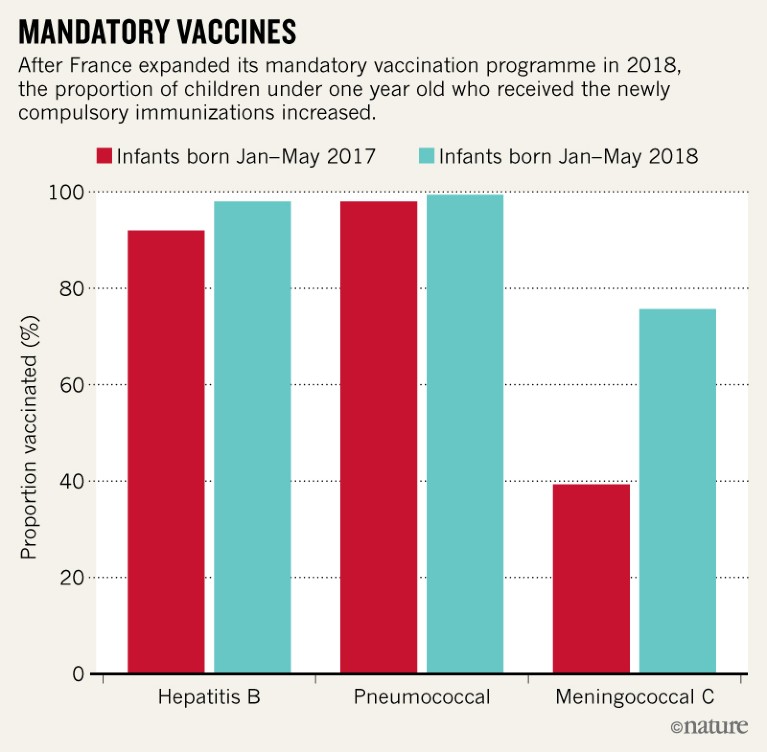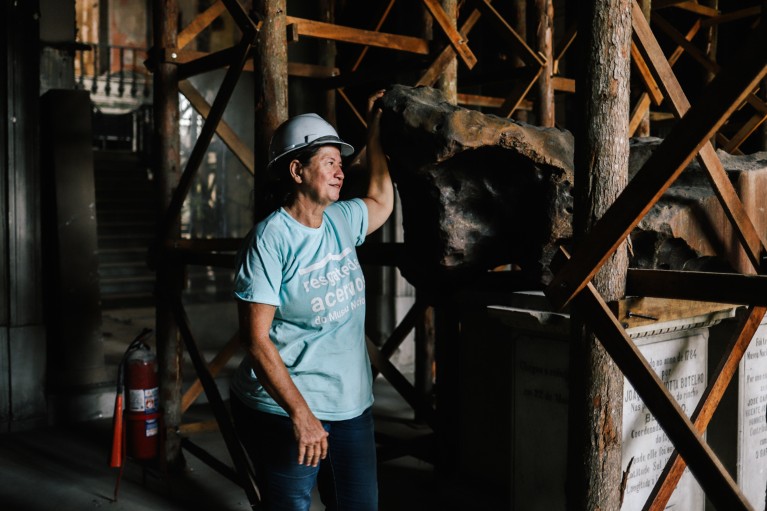Hello Nature readers, would you like to get this Briefing in your inbox free every day? Sign up here.

Lightning flashes over Kuwait and Saudi Arabia in this photo taken by astronauts aboard the International Space Station.Credit:NASA/JSC
Space station uncovers thunderstorm mystery
A cluster of cameras peering down at Earth from the International Space Station has revealed how thunderstorms trigger ɣ-ray bursts. The mysterious electrical flashes above storm clouds — invisible to the naked eye, but not to specialized cameras — have long puzzled scientists. New data support the theory that the bursts are made when electrically charged particles move along a conductive channel in the thunderstorm.
A carbon-neural Europe by 2050
Former German defence minister Ursula von der Leyen will be the next president of the European Commission, and has put climate change at the top of her agenda. In a speech in parliament a few hours before her election, von der Leyen pledged that the EU will lead the way in climate negotiations and ramp up its own greenhouse-gas cuts. Von der Leyen is also set to announce a European Green Deal in her first 100 days in office, which would include a law to make Europe carbon neutral by 2050. “I want Europe to become the first climate-neutral continent in the world,” she said.
Vaccination rates rise in Italy and France
Vaccination coverage in France and Italy has increased following the expansion of mandatory vaccination laws. France — home to one of the highest rates of vaccine mistrust in Europe — requires infants to get 11 immunizations, and Italy insists on 10. Both countries also saw increased uptake of vaccines that were not mandatory — maybe because of public-health campaigns that emphasized the safety and effectiveness of vaccinations.

Source: Ref. 1
FEATURES & OPINION

Astronomer Maria Elizabeth Zucolotto with a massive meteorite that survived the fire.Credit: María Magdalena Arréllaga for Nature
Brazil recovers from a scientific armageddon
The destruction of the National Museum in Rio de Janeiro was the biggest scientific tragedy ever recorded in Brazil. On 2 September 2018, fire claimed tens of thousands of irreplaceable specimens. Most of the 90 resident researchers lost all of their work and belongings. Ten months later, scientists share how they are forging ahead — and their fears for the country’s remaining scientific legacy.
Royal Society president stands up for Chinese scientists in the United States
Venki Ramakrishnan, president of the UK Royal Society, writes in a letter to Nature that the climate of suspicion hanging over their Chinese and Chinese American communities at US universities is bad for science and just plain wrong. He points to the Second World War internment of Japanese-Amercians and the McCarthy-era communist witch hunts as examples of ‘presumed guilty’ that should not be repeated.
